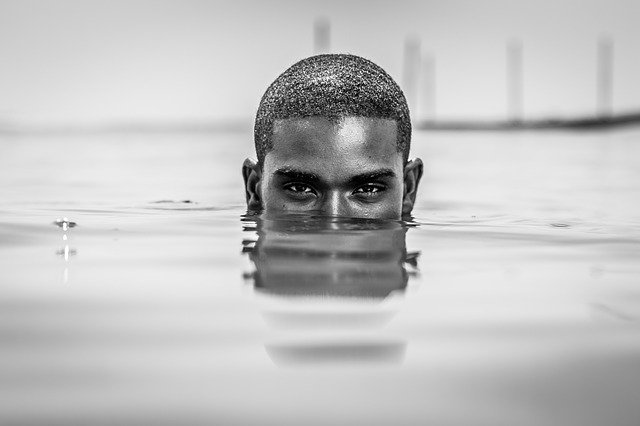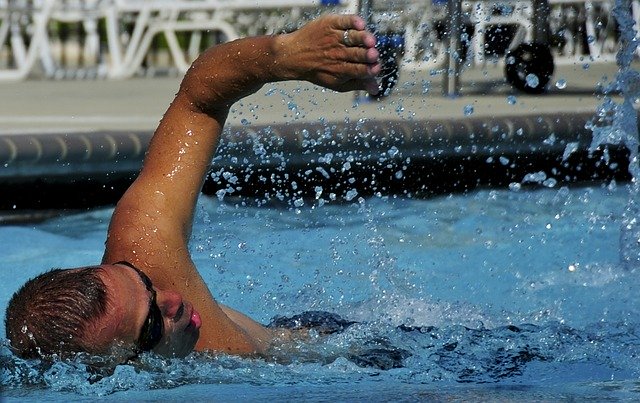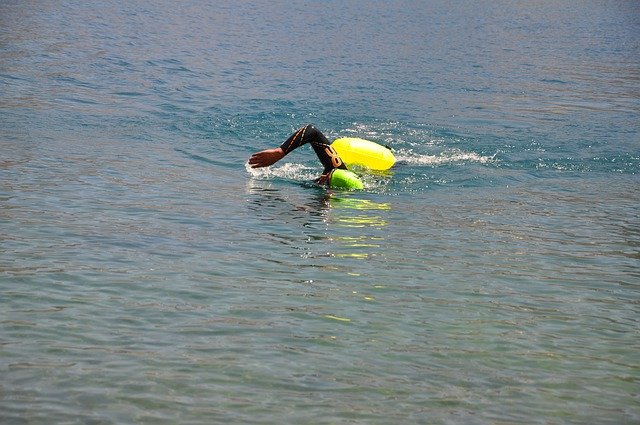Starting yourself in open water swimming requires a lot of practice away from bodies of water, in safer settings like the local pool where – believe it or not – you can simulate the conditions you’ll face outside at least on their mildest level.
Before starting any of the training though, remember to not overwork yourself, the goal here is for you to strengthen (not exhaust) yourself in none of the conditions, either outside or indoors. As strange as it may seem – one of the phases of training you’ll need to master will be relaxing your muscles for performing properly. There are several things to take into account when considering beginning to swim outdoors, and they all resume themselves in our natural, human limitations; it is normal to feel panicky when you first enter an unknown environment, it is normal to get tired after struggling to even move forward in the water, doesn’t mean we can’t condition ourselves to respond properly to these circumstances in a way that will keep us safe and healthy.
Build Your Stamina
In advance of preparing yourself up for an open-water workout, you must be able to swim at least two to three times the distance you’re aiming for nonstop in the pool. Open-water gaps normally get lengthened because of shifting environments, so a mile in the ocean will take more time – and effort – than a mile in the pool. Constructing your stamina in the pool will warrant tiredness won’t turn out to be a factor when your planned 30-minute open-water swim grows to be 55-minute or longer.
Do Not Depend on the Wall
In open water, shifting routes or pausing and then beginning again can be hard since there’s no wall to push off of. Exercise turning deprived of that foundation by doing a set in the pool where you halt short of the wall and tumble-turn at the flags.
Improve Your Breathing
A large number of swimmers have a favored side for breathing, but in open water, this quickly stops being an option.
Inconsistency in the wind, waves, and current can make breathing nasty, unwise, and sometimes unachievable if you carry on favoring one side. Studying how to breathe securely on both sides and containing your breath for numerous strokes can decrease fear in the occasion that you’re forced to skip a breath or get your face full of water.
Change Your Stroke
Variable conditions call for changeable stroke styles. In particularly uneven water, doing shorter, superficial strokes instead of extended, deep arm pulls can help you stay closer to the surface of the water and avoid getting tossed with the waves.
Apply this alteration in the pool with a set that alternates between long, smooth, deep arm pulls, and short, shallow pulls.
No Goggles
The majority of open water bodies will be duller than your local pool; in some cases, you may only be able to see just a few inches in front of you. You can simulate these conditions by lifting your goggles onto your head and swimming with your eyes closed. Take six or ten strokes, then, while stopping mid-lane, put your goggles back on and take another six to ten strokes. Resume this outline for several distances, interchanging diverse stroke hustles and breathing arrangements. The aim is to show yourself that, even with partial to zero visibility, you can continue to move onward minus losing good performance and breath handling.

Exercise Sighting
You have to learn the ability of sighting, which signifies frequently looking for milestones mid-swim to confirm you’re going in the correct direction in a body of water.
As you stroke, turn your head to the side like you would to take a breath. Then spin your head frontward, raising your goggles out of the water to look onward. Your neck and chin must remain underwater and the head lift must be as minor as possible. Your lower body possibly will innately drop, so fight it by kicking extra hard. As you sight, breathe out (instead of breathing in) or hold your breath. This will reduce your probabilities of sucking down water as you spin your head to the fore.

Relax in the Cold
A great number of people find their muscles tightening themselves and their breathing erratic and shallow when they first enter cool water. A wetsuit can considerably reduce that physical answer, but it won’t eradicate it. All you’ll need for this is to accustom your muscles to the temperature.
Take cold showers or dive in cold baths while inhaling bit by bit, this will assist you at relaxing into the cold. Despite that bathing or sitting in frosty water will not copy the feeling of swimming in it, it could work to make those initial moments of your open-water swim a tad less difficult.
